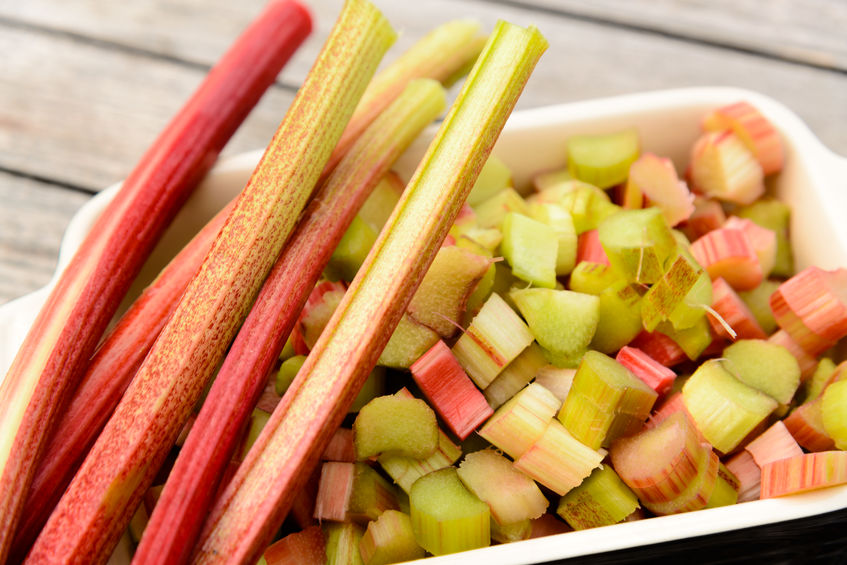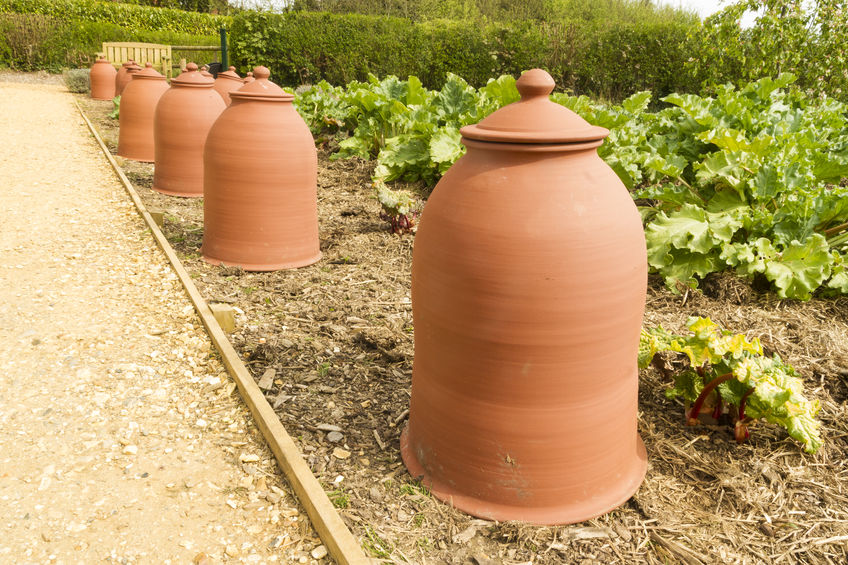Traditionally most of the world’s forced rhubarb was grown in West Yorkshire in forcing sheds in an area called the rhubarb triangle. It can however be successfully forced in our home gardens or allotments.
Two to three year old crowns (roots) should be used. In December or January the crowns should be covered with a layer of straw or bracken, and an upturned bucket, dustbin or a traditional rhubarb forcing pot should be placed over them to exclude all light. The forcing process can really take the energy out of the crowns, so it is recommended that you have at least two crowns and cover alternate ones each year so that the other can be left to recover.
Excluding the light will limit photosynthesis and cause the stems to reach out for light, producing pale soft stems that are quite delicious. The stems will be ready to pull two to three weeks earlier than crowns that are left uncovered, when there is little else to harvest on our plots. Forced crowns should then be left unpulled for the rest of the growing season to aid recovery.
An even earlier harvest can be achieved by lifting crowns in November. These crowns should have been exposed to at least seven to nine weeks of cold after the growing season outside to bring them out of dormancy. They can then be potted up in a quality multi-purpose compost and taken into a cold greenhouse, cellar or garage and kept at a temperature of 7-16C (45-60F). Light should be excluded as previously described. Keep the crowns damp. The crop will then be ready to harvest in around five weeks. It is recommended that crowns forced in this way should be discarded after the harvest as they become very weak.
To view rhubarb crowns at Thompson & Morgan click here
To view a terracotta rhubarb forcer at Harrod Horticultural click here
Mark Snelling.
If you have enjoyed reading our blog post then why not fill in the form provided to allow us to send you our blog posts and newsletters by email.


